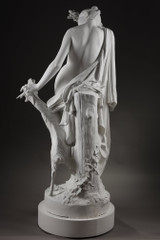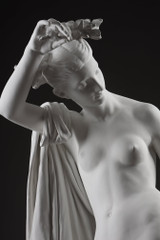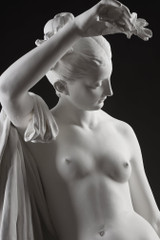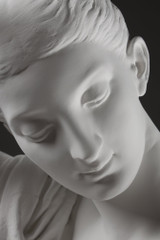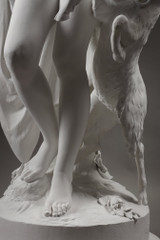An incredible plaster sculpture depicting the nymph Amalthea and Zeus's goat. Amalthea is the goat who nursed the infant Zeus and to whom Rhea entrusted his care to protect him from Cronus's jealousy. Later, the goat was transformed into a nymph. This is an extremely rare example, created in the 19th century by an unidentified artist. Circa 1880.
In the 19th century, few sculptors practiced direct carving in stone, marble, etc. They were more often "modelers." They generally used plaster to give form to a creation straight from their imagination, then entrusted the carving to specialists. Sculptures are therefore often signed by both the master sculptor and the specialists commissioned for the carving. Creating a plaster model beforehand allowed master sculptors to present their creations at an exhibition and ensure their success before producing the final version in marble, stone, or bronze.
A distinction is made between " modeling " a plaster sculpture, which is created by hand by the master sculptor, and " casting " a plaster cast. Casting does not play a role in the creation process of the sculpture; on the contrary, it requires a pre-existing original model, which is then molded in order to reproduce it, for example.
Our plaster sculpture of Amalthea and Zeus's goat is an original, hand-modeled piece by an unidentified artist. The use of plaster allows the artist's hand to be more visible, enabling them to accentuate the smallest naturalistic details and thus enhance the nymph's humanity.
Condition report: In perfect condition and mounted on a base with wheels for easy movement. The whole thing is extremely heavy.
- Reference :
- 3388
- Width :
- 92 (cm)
- Height :
- 182 (cm)
- Depth :
- 90 (cm)
- Era:
- 19th century
- Materials:
- plaster





